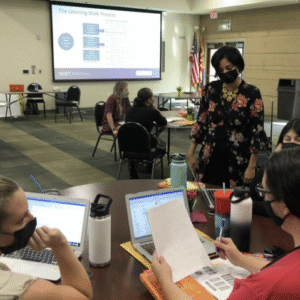
Student-centered leadership is an approach that places student learning, well-being, and growth at the heart of all decisions and practices within a school. It focuses on understanding students’ needs, listening to their voices, and creating… Read more

A safe and supportive learning environment is essential for academic success, emotional development, and long-term well-being. When students feel respected, secure, and valued, they are more likely to engage, take risks in their learning, and… Read more

Introduction Professional Learning Communities (PLCs) are a cornerstone of effective school improvement and teacher collaboration. When paired with strong leadership, PLCs create a structured environment for educators to reflect on practice, analyze student data, and… Read more

School leadership plays a pivotal role in shaping educational outcomes. Research consistently highlights a strong correlation between effective leadership and overall school performance, including student achievement, staff morale, school climate, and community engagement. While many… Read more

Introduction Empowering teachers with leadership opportunities is essential for fostering a dynamic, collaborative school culture. When educators are given structured pathways to develop and demonstrate leadership, schools benefit from increased innovation, teacher retention, and student… Read more

Instructional leadership is a cornerstone of effective school improvement. It focuses on enhancing teaching and learning by ensuring that educators have the vision, tools, and support to help every student succeed. Building instructional leadership capacity… Read more

Teacher leadership is a powerful force for school improvement. When educators are empowered to lead from within their classrooms and beyond, schools benefit from enhanced collaboration, stronger instructional practices, and a culture of continuous learning.… Read more

Introduction Educational leaders are frequently called upon to navigate shifts in policy that affect schools, classrooms, and communities. Whether driven by legislation, funding changes, curriculum reforms, or health and safety guidelines, policy changes can bring… Read more

Leading a diverse school requires intentionality, cultural responsiveness, and a commitment to equity. As schools across the globe become increasingly diverse in terms of race, ethnicity, language, ability, socioeconomic status, and family background, school leaders… Read more

Accountability in schools is essential for ensuring high standards, fostering trust, and supporting continuous improvement. When accountability is approached with clarity, fairness, and collaboration, it becomes a powerful driver of student achievement, professional growth, and… Read more
